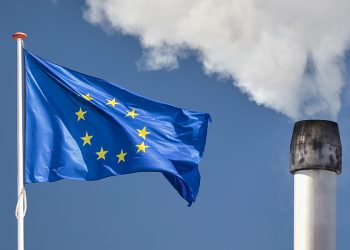A Particularly Sensitive Sea Area (PSSA) is an area that has been provided special protection through action by the IMO because of its significance for recognized ecological, socio-economic, or scientific attributes, and which may be vulnerable to damage by international maritime activities.
When a PSSA is designated, the IMO also may adopt APMs. These measures aim to prevent, reduce, or eliminate the identified risk by controlling maritime activities within the designated area.
APMs include but are not limited to:
• mandatory ships routing;
• mandatory ships reporting; and
• areas to be avoided.
APMs are to be consistent with international law as reflected in the United Nations Convention on the Law of the Sea (UNCLOS)
In a recent Marine Notice about PSSA, the Marshall Ship Registry informs that the Australian Maritime Safety Authority (AMSA) requires compulsory pilotage for certain vessels navigating within the Great Barrier Reef and Torres Strait. This pilotage is also recommended under the IMO PSSA. Penalties for non-compliance with the pilotage requirements are likely if a vessel is not in transit passage but enters an Australian port.
Most recently, during MEPC 80, 3-7 July 2023, IMO agreed to designate a particular sensitive sea area in the North-Western Mediterranean Sea (NW Med PSSA) to protect cetaceans from international shipping.
In that regard, until today, there are 18 PSSA and the Ship Registry gathers the following information about these specific areas and the effective protective measures
1. The Great Barrier Reef (MEPC 30, September 1990, Resolution MEPC.44(30))
- Mandatory ship reporting system (REEFREP)
- IMO-recommended Australian pilotage system
- Australia’s compulsory pilotage system when navigating the Torres Strait is recommended, rather than required based on the principle of navigation freedom under UNCLOS, Section 2
2. The Sabana-Camagüey Archipelago (MEPC 40, September 1997 Resolution MEPC.74(40))
- Traffic separation schemes off Costa de Matanzas, in the Old Bahama Channel, and the Punta Maternillos
- Discharge prohibition
- Area to be avoided in the access routes to the ports of Matanzas and Cardenas
3. Malpelo Island (MEPC 47, March 2002 Resolution MEPC.97(47))
- Area to be avoided around Malpelo Island
4. The sea around the Florida Keys (MEPC 47, March 2002 Resolution MEPC.97(47))
- Mandatory no anchoring areas in the Tortugas Ecological Reserve and the Tortugas Bank in the Florida Keys
- Areas to be avoided off the Florida coast
5. The Wadden Sea – Denmark, Germany, Netherland (MEPC 48, October 2002 Resolution MEPC.101(48))
- Existing protective measures, including but not limited to: mandatory ship reporting systems; deep water routes, traffic separation schemes, recommended and mandatory pilotage, MARPOL Special Area, and other national measures
6. Paracas National Reserve – Peru (MEPC 49, July 2003 Resolution MEPC.106(49))
- Area to be avoided (by ships > 200 gt carrying hydrocarbons in bulk)
- Traffic separation scheme in the approaches to Puerto Pisco
7. Western European Waters (MEPC 52, October 2004 Resolution MEPC.121(52))
- Mandatory ship reporting system for single-hull tankers carrying heavy grades
of fuel oil
8. Torres Strait as an extension of the Great Barrier Reef (MEPC 53, July 2005 Resolution MEPC.133(53))
- Two-way shipping route through the Torres Strait
- IMO-recommended Australian pilotage system
9. Canary Islands – Spain (MEPC 53, July 2005 Resolution MEPC.134(53))
- Mandatory ship reporting system (CANREP)
- Traffic separation schemes
- Five areas to be avoided off Lanzarote Island; off the island of Tenerife; off the island of Grand Canary; off La Palma island; and off the island of El Hierro
10. The Galapagos Archipelago – Equador (MEPC 53, July 2005 Resolution MEPC.135(53))
- Recommended tracks, mandatory as a condition of port entry
- Mandatory ship reporting system (GALREP)
- Area to be avoided
11. The Baltic Sea area – Denmark, Estonia,Finland, Germany, Latvia, Lithuania, Poland, Sweden (MEPC 53, July 2005 Resolution MEPC.136(53))
- Existing protective measures, including but not limited to: existing routing and pilotage systems; mandatory ship reporting systems; MARPOL Special Area; Emission Control Area
- Traffic separation scheme and associated routing measures in the South-west Baltic Sea
- Deep-water route of Gotland Island
- Areas to be avoided in the Southern Baltic Sea
12. The Papahānaumokuākea Marine National Monument – US (MEPC 57, April 2008 Resolution MEPC.171(57))
- Mandatory ship reporting system (CORAL SHIPREP)
- Six areas to be avoided
13. The Strait of Bonifacio – France, Italy (MEPC 62, July 2011 Resolution MEPC.226(64))
- Mandatory ship reporting system (BONIFREP)
- Routing Measures
- Recommendation on navigation through the Strait of Bonifacio
14. The Saba Bank – North-Eastern Caribbean Area of the Kingdom of the Netherlands(MEPC 64, October 2012 Resolution MEPC.226(64))
- Existing MARPOL Annex V Special Area
- Mandatory no anchoring area for all ships
- Area to be avoided (by ships 300 gt and over)
15. South-west Coral Sea as an extension of the Great Barrier Reef and Torres Strait (MEPC 68, May 2015 Resolution MEPC.268(68))
- Two-way route in the Prince of Wales Channel
- Two-way route in Diamond Passage
- Two-way route to the West of Holmes Reef
- Area to be avoided north-east of the Great Barrier Reef, between Palm Passage and Hydrographers Passage
- Traffic separation systems
16. The Jomard Entrance – Papua, New Guinea (MEPC 70, July 2016 Resolution MEPC.283(70))
- Two-way route to the north of Jomard Entrance
- Three two-way routes to the south of Jomard Entrance
- Precautionary area that lies between the northern and southern two-way routes
17. Tubbataha Reefs Natural Park – The Sulu Sea, Philippines (MEPC 71, July 2017 Resolution MEPC.294(71))
- Area to be avoided (entered into force on 01 January 2018)
18. North-Western Mediterranean Sea – coastline of France, Italy, Monaco and Spain (Resolution MEPC.380(80)
- Voluntary speed reduction (VSR) to between 10 and 13 knots.
- Voluntary safety distance keeping from any medium or large cetacean detected.
- Voluntary VHF broadcasting of the position of any medium or large cetacean detected and transmitting the information to designated coastal Authority.
































































